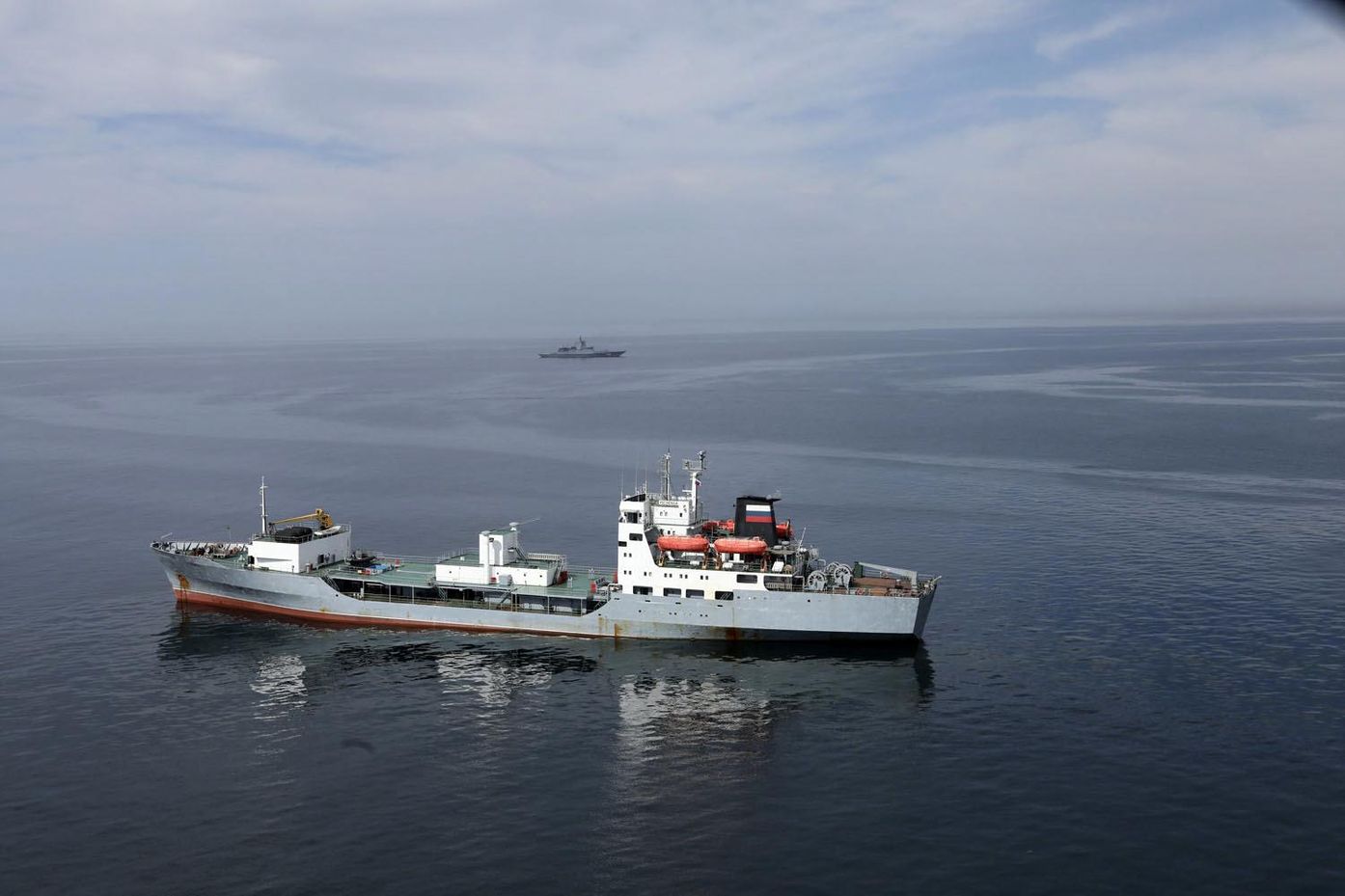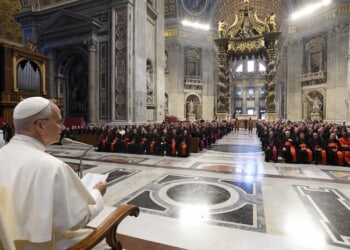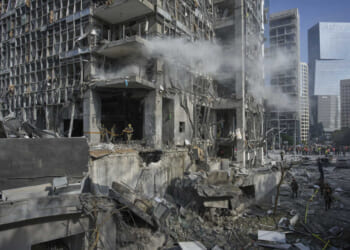
China’s military forces are escalating preparations for a military attack against Taiwan in what the commander of the U.S. Indo-Pacific Command calls a “rapid boil.”
Adm. Samuel J. Paparo said in public remarks that his predecessor warned him before he took over one of the largest military forces a year ago that a conflict with China could take place on his watch.
“You know the metaphor of boiling the frog. Well, it’s a rapid boil. We notice quick change,” Adm. Paparo said of People’s Liberation Army operations in remarks at a conference hosted by the McCain Institute on Friday.
The PLA in 2021 held a single brigade exercise near Taiwan and followed it with a six-brigade drill in 2022 and a 42-brigade exercise in 2024.
The 2024 war games involved two-thirds of the PLA navy’s amphibious fleet with hundreds of assault combat vehicles in the water that practiced breaching barriers and obstacles and then moving military forces on land in simulated attacks on urban terrain, he said.
The military operations represent a steady flow of expanding training and rehearsals for a future attack on Taiwan, according to U.S. military leaders.
The Chinese military also is conducting frequent “pressure operations” around Taiwan that simulate the closing of a military zone.
“These are rehearsals for selective blockade quarantine, and then we’re seeing rehearsals across the board and so that that number from one, to six, to 42 are step level changes in the environment,” the four-star admiral said.
“I think the rates of change on the depth and breadth of their exercises is the one non-linear effect that I’ve seen in the last year that wakes me up at night, that keeps me up at night.”
Growing ties and partnerships between China and two other U.S. adversaries, Russia and North Korea, also are worrisome. “All of it is palpable over the last year,” Adm. Paparo said.
The military rehearsals by China were first described by Adm. Paparo last year and range from small island seizures — like Taiwan’s small island near the Chinese coast — to larger operations like blockade rehearsals that would seek to prevent the island from receiving needed resources.
China’s objective in a military blockade would be to interdict certain commodities and try to force concessions from Taipei.
Last are rehearsals for large-scale invasion operations across the 100-mile-wide Taiwan Strait that were described as “very compelling models” for attacks.
Adm. Paparo described the rehearsals as the “entire range of military operations, providing every option that they would want. And these are rehearsals in earnest.”
Asked about Chinese President Xi Jinping’s order for the PLA to be ready for military action against Taiwan by 2027, Adm. Paparo said the year is not a “go by” date. Instead it is an order to be ready for action then.
Beijing has set the stage for a military takeover in 2005 by passing an “anti-secession law” that can be used to try an annexation if Taiwan declares formal independence or is seen moving further away from mainland control.
As for PLA readiness for an attack, Adm. Paparo said: “There are certain conditions where they might affect an invasion or some kind of coercive behavior before they believe they’re fully ready.”
Other signs of increasing Chinese belligerence in the region include recent naval patrols and live-fire exercises around Australia and New Zealand.
The PLA warships circumnavigating Australia were the military “stretching their legs,” he said.
“They’re becoming a global force bit by bits,” he said.
China is also facing mounting internal problems including regular purges of officials for corruption, severe economic problems with financial and real estate crises and youth alienation with people “lying flat” in defiance of the system, he said.
The ruling Chinese Communist Party is also struggling with a demographic decline.
Asked about the balance of power between the United States and China, Adm. Paparo said he is convinced the United States would “prevail” in a war, based on American military advantages in submarine warfare, counterspace and the ability to strike Chinese forces “from the surface to the conflict line.”
However, the trend for matching forces against the PLA is “a bad trajectory.”
China, he noted, is producing two submarines a year versus 1.4 for the United States and six warships for every 1.8 U.S. naval combatant. China also is producing 120 fighters a year to about 90 for the United States.
Asked if the American people are ready to go to war, Adm. Paparo said it doesn’t matter to him since his position is that he owes military options to the president.
“And it will be up to the commander in chief if America does go to war,” he said.
He said, however, that over history many in the world have mistakenly assumed the United States is not ready to go to war, noting the Pearl Harbor attack and World War II was followed by the Korean War, the Vietnam War and the first Iraq war.
“So there is an element within the United States that when it feels sufficiently threatened, our country becomes unified and serious,” he said.
On North Korea, Adm. Paparo said there are troubling signs from the regime of Kim Jong Un, such as blowing up roads that connected the country to South Korea and the building of a wall inside the military demarcation line between the two countries.
“I think there is a significant fear that if the North Koreans catch wind of how their fellow Koreans are living in the South, it could be troublesome,” he said.
North Korea’s ties to Russia will result in greater military capability for Pyongyang.
“This is a dangerous and unpredictable potential adversary,” he said.




![‘It’s a Recipe for a Hundred Years of National Dominance’: Stephen Miller [WATCH]](https://www.right2024.com/wp-content/uploads/2025/05/Stephen-Miller-Completely-Obliterates-CNN-Host-Over-Her-Illegal-Immigration-350x250.jpg)
![Trump Posts Hilarious Pope Meme, Leftists Immediately Melt Down [WATCH]](https://www.right2024.com/wp-content/uploads/2025/05/Trump-Posts-Hilarious-Pope-Meme-Leftists-Immediately-Melt-Down-WATCH-350x250.jpg)



![Mother Breaks Silence After Three Daughters Killed During Father’s Custody Visit, Memorial Held [WATCH]](https://www.right2024.com/wp-content/uploads/2025/06/Mother-Breaks-Silence-After-Three-Daughters-Killed-During-Fathers-Custody-350x250.jpg)







